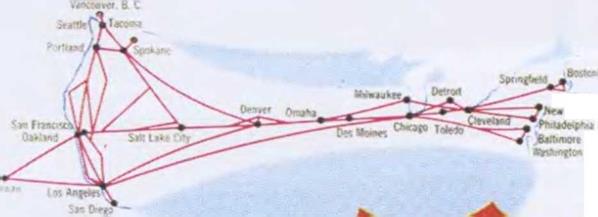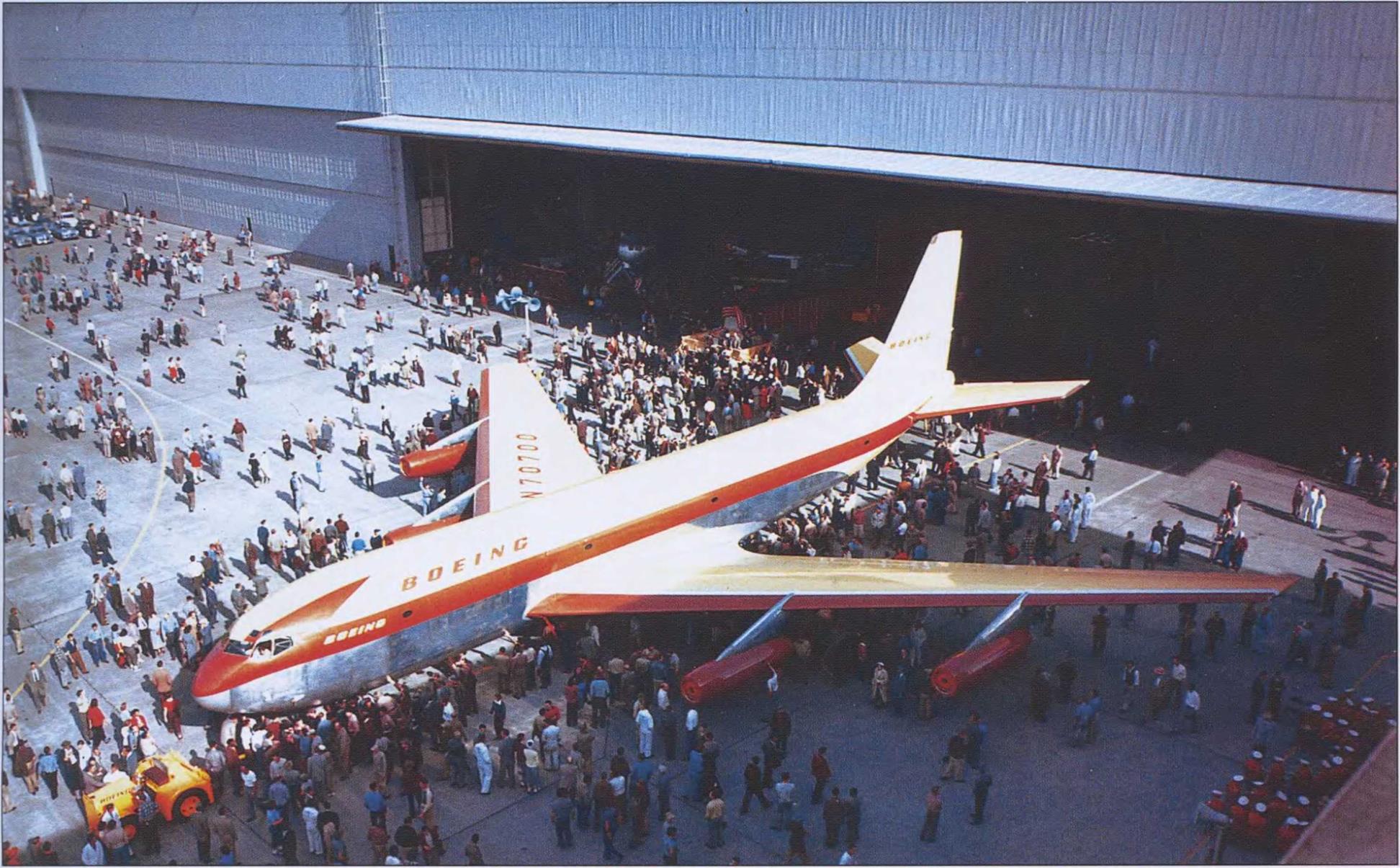Enjoy Red Carpet service on United Air Lines’ DC-7s…nation’s fastest airliners, nonstop coast to coast!
|
You can look forward to “red carpet* service when you travel on one of United’s deluxe DC-7s like "‘the Hollywood*’ or “the Continental. It’s in keeping with the luxury you enjoy every mile of the way on the nation’s newest, fastest and most comfortable airliners! On United’s DC-7s you relax in deep, richly upholstered seats •.. you’re served beverages, and delicious, full-course meals prepared by United’s famous chefs… there are games, magazines, music… other service “extras” in the famous Mainliner® manner. Cruising at 365 m. p.h. in the smooth upper air, you enjoy the added comfort of improved soundproofing, automatic pressurization, and air conditioning that keeps the cabin ever-fresh. Also — your luggage gets “white glove treatment.” It’s stowed in a special compartment (exclusive with United) adjoining the main cabin for extra-fa^t deliverv upon arrival. |
|
lor the iinest service in air transportation, ily United’s great Mainliner fleet. For reservations, call or write United or an Authorized Travel Agent. |
|
Hartford York-He»**- |
|
DC |
|
Ш Мяв I me limr—ti 89 C/ftes |
|
UNITED |
|
AIR LINES |
|
Серг. 1954, United Air lines |


Representing the peak of modern American illustration were the famed, colorful airline ads of the 1950s. Painted by such commercial illustration legends as Joe Henninger and Ren Wicks, these glorious vistas often showed passengers boarding a sleek, giant, modern airliner with the ever-present red carpet and stanchions standing at the ready. Here we see the typical ad showing a bird’s-eye view of a United DC-7 deplaning its happy passengers on an equally typical beautiful sunny day. Note the bevy of press photographers taking pictures of the Hollywood movie stars who were sure to be aboard. (Mike Machat Collection)
best speeds production commercial aircraft of the time could muster were in the 300-mph-plus range. This was a more-than-200-mph differential between military and civilian airplane types! (Of course, had the Republic Rainbow actually been consummated, speeds would have been half this.) And if one includes the fighter aircraft in the inventory or in flight test in 1954, the once – elusive speed of sound was being easily exceeded on a daily basis, and advanced experimental aircraft were now attaining more than twice that speed.
As tantalizing as these now-shattered limitations were, reality within the airline boardrooms dictated an attitude that was something entirely different. The prevailing thinking was that jet propulsion was too much of everything: too radical, too dangerous, too undependable, too fuel consumptive, and too expensive. “Best to leave all this risk taking to those jet jockeys in the military, and if you want to know why we think this way, just look across the pond at Britain’s travails with their Comet,” said the airline mavens. Flying in the stratosphere and utilizing kerosene blasting out of a pipe was just too dangerous for commercial applications. The airlines had just spent a decade and a half, and lots of advertising dollars, convincing people that airline flying was safe and dependable. No risks for us, thank you, said the airline bosses. Boeing, however, had other ideas.
What transpired when the prototype XB-47 was pulled out into the Seattle sunshine for the first time in late 1947 was nothing less than the standing of the aviation world on its proverbial head. This included the airline business as well, for every aspect of engineering that Boeing pioneered with its revolutionary Stratojet (which begat the even larger B-52) was transferred to its Model 367-80 prototype jet transport and the 707 jetliner. As a matter of fact, all basic high-Mach-number transports from the B-47 onward have been shaped to include the basic tenets developed in Seattle all those many years ago. That single airplane was absolutely transformational in nature.
In 1950, William Allen, Boeing’s president, and his Chief Engineer for Preliminary Design, Maynard Pennell, visited the Farnborough Airshow in England to view the de Havilland Comet for the first time. After the fly-by in the afternoon, Allen asked Pennell what he thought of the English jetliner. “Its a very good airplane,” Pennell responded. “Do you think we could build one as good?” asked Allen. “Better,” said Pennell. “Much better.” And they did.
From the point in May 1954 when the Dash 80 was rolled out at Renton, Washington, until the first jetliner revenue flight in late 1958, airline trepidation would slowly but inexorably start crumbling, bit by bit, just
|
like a sand castle in the surf, until finally, outright enthusiasm was the order of the day in those staid boardrooms. But you can’t run an airline operation without passengers. What did the folks at home think about all of this?
The postwar period, especially in the United States, was filled with one breakthrough or broken record after another. Pilots were already flying in jets or rocket-powered airplanes. Space travel was on everybody’s mind, the Air Force and Navy leading the way in both instances. Cars that flew, houses that were smart enough to clean themselves and cook for us — everything futuristic was now within our grasp.
Of course we should be flying coast-to-coast in jetliners! Of course we should link the continents by overflying great bodies of water at high speeds and altitudes with the reliability and simplicity that the turbine engine promised. Even linking city centers via jet-powered helicopters was just around the corner. It seemed everything we could imagine, we could do. The age of optimism had coupled with the age of speed, and air travelers couldn’t wait to experience the jetliner. The airlines were beginning to lay the foundation to indulge these yearnings, and the world was ready to enjoy The Next Great Thing: the Jet Age.
In the meantime, however, passengers would have to be content with wide seats and lovely meals in airliners, which were taking 9 or 10 hours to cross the country, and with a stop or two at that. What a study in contrast between those futuristic articles we read in LIFE, POST, or Collier’s, and the realities of commercial aviation at the time.












